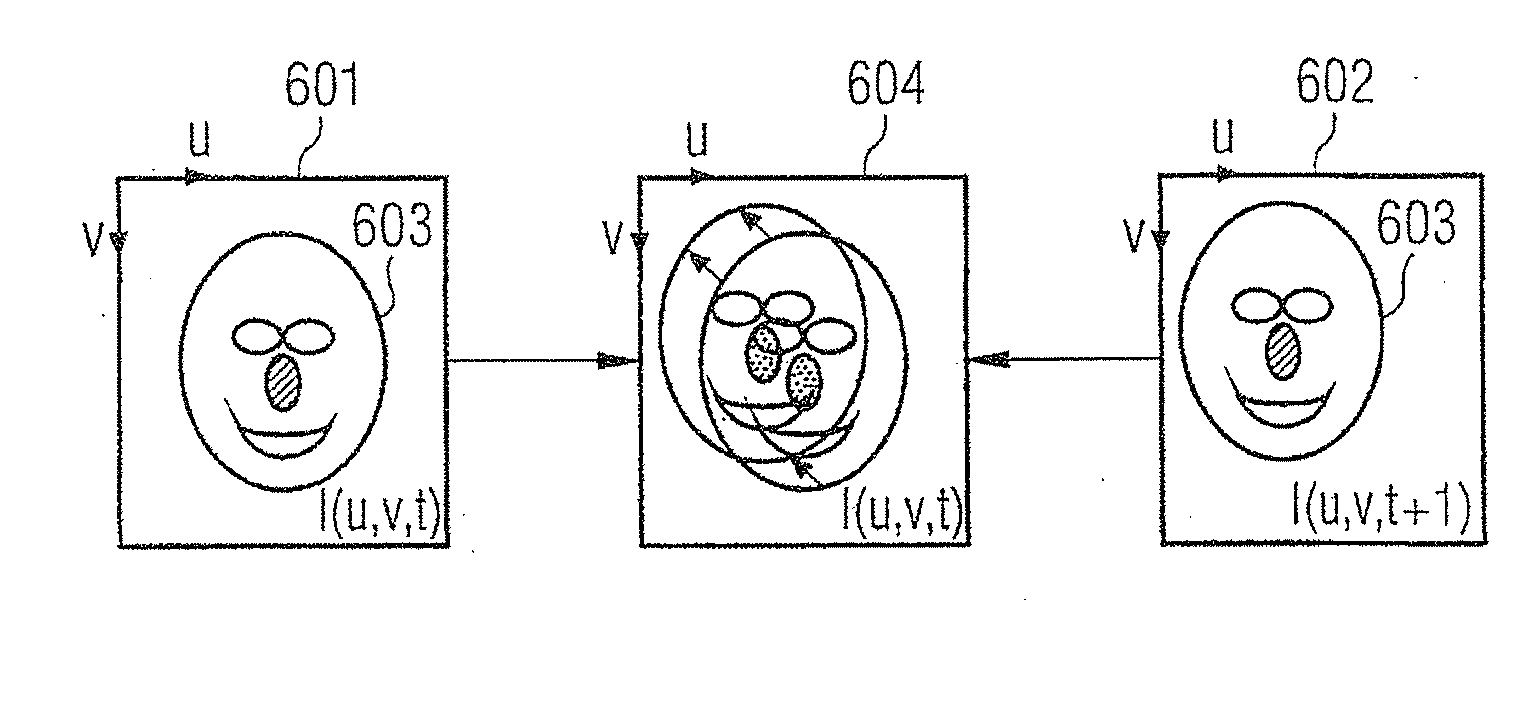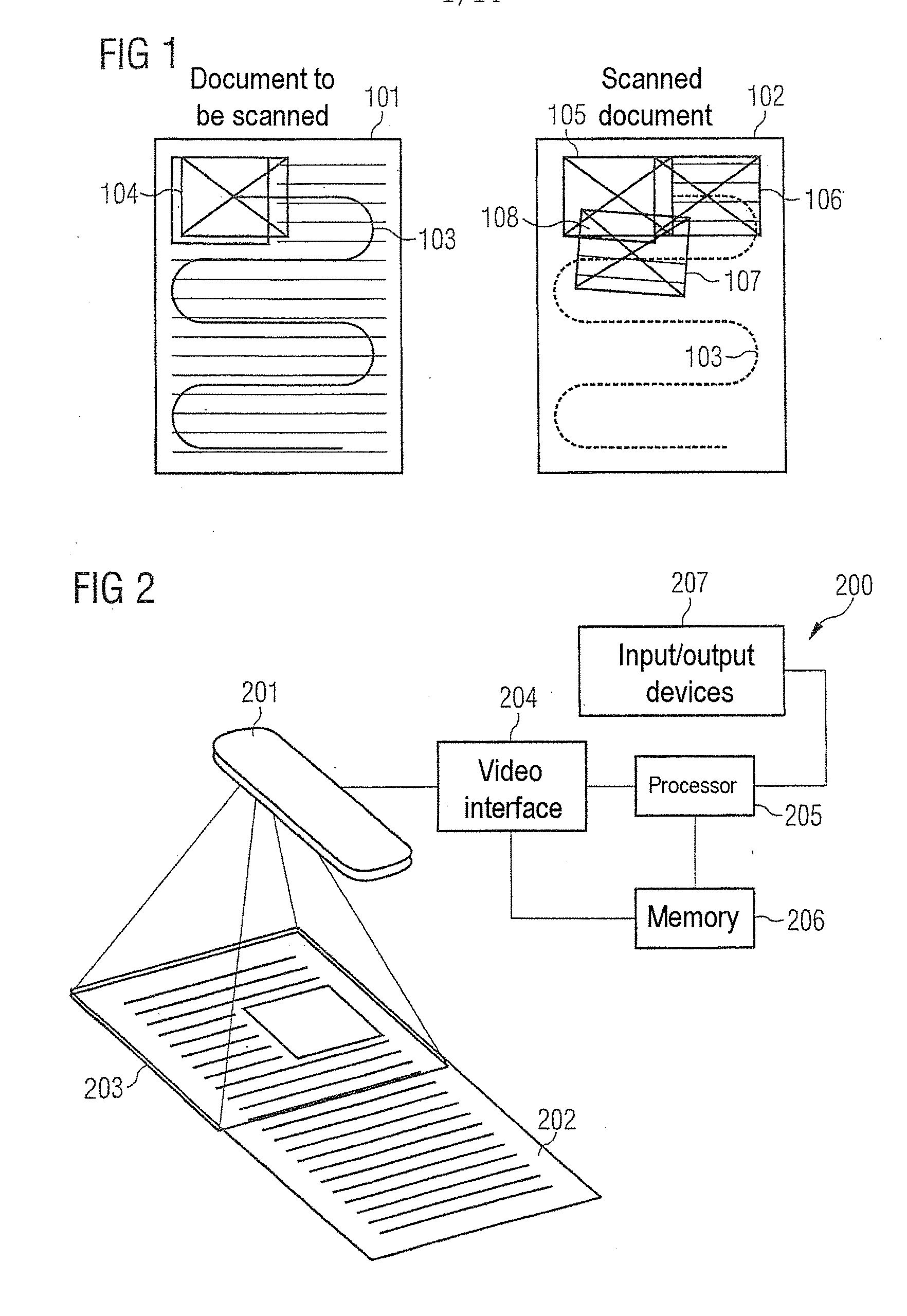Motion estimation in a plurality of temporally successive digital images
a technology of digital images and motion estimation, applied in image analysis, instruments, computing, etc., can solve the problems of insufficient resolution of built-in digital cameras, low resolution of digital images that can be recorded by means of mobile radio telephones with digital cameras, and insufficient resolution of digital images
- Summary
- Abstract
- Description
- Claims
- Application Information
AI Technical Summary
Problems solved by technology
Method used
Image
Examples
Embodiment Construction
[0062]The invention is based on the problem of providing a simple and efficient method for image registration which can be used online, that is to say in real-time applications.
[0063]The problem is solved by means of a method for computer-aided motion estimation in a multiplicity of temporally successive digital images, an arrangement for computer-aided motion estimation, a computer program element and a computer-readable storage medium having the features in accordance with the independent patent claims.
[0064]Provision is made of a method for computer-aided motion estimation in a multiplicity of temporally successive digital images, in which a first partial motion estimation is carried out in a second digital image relative to a first digital image temporally preceding the second digital image, in which a reference image structure is constructed from the first digital image and the second digital image on the basis of the first partial motion estimation, said reference image struct...
PUM
 Login to View More
Login to View More Abstract
Description
Claims
Application Information
 Login to View More
Login to View More - R&D
- Intellectual Property
- Life Sciences
- Materials
- Tech Scout
- Unparalleled Data Quality
- Higher Quality Content
- 60% Fewer Hallucinations
Browse by: Latest US Patents, China's latest patents, Technical Efficacy Thesaurus, Application Domain, Technology Topic, Popular Technical Reports.
© 2025 PatSnap. All rights reserved.Legal|Privacy policy|Modern Slavery Act Transparency Statement|Sitemap|About US| Contact US: help@patsnap.com



